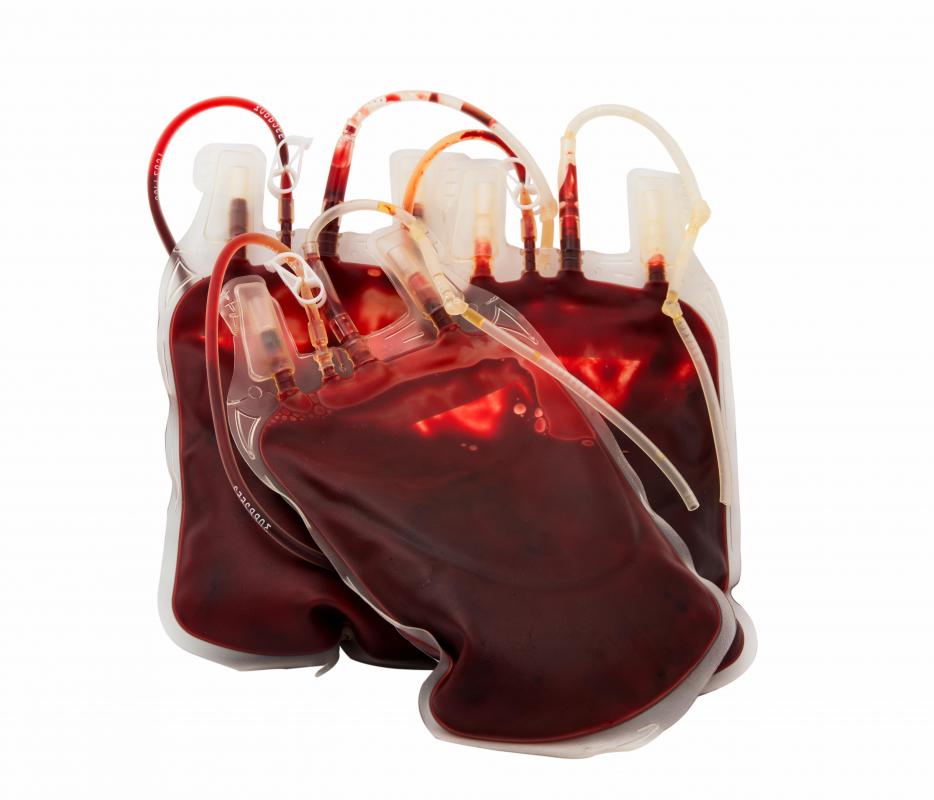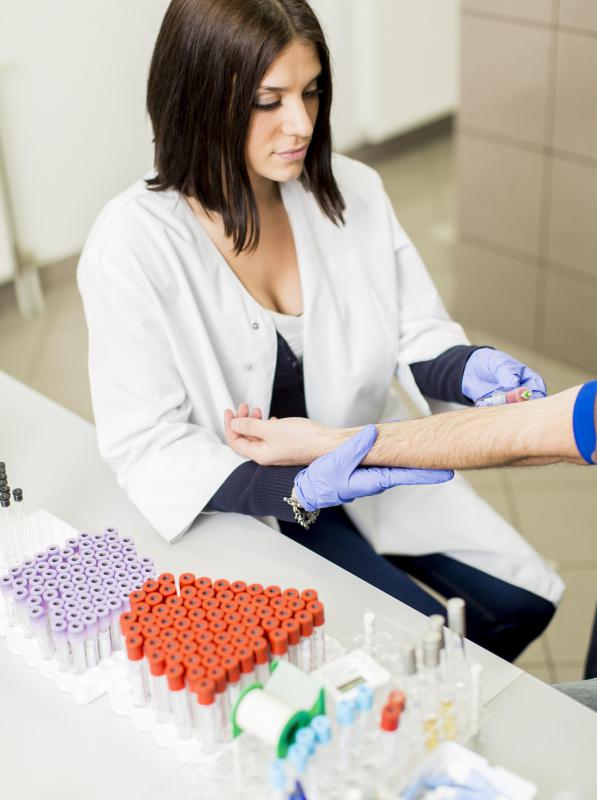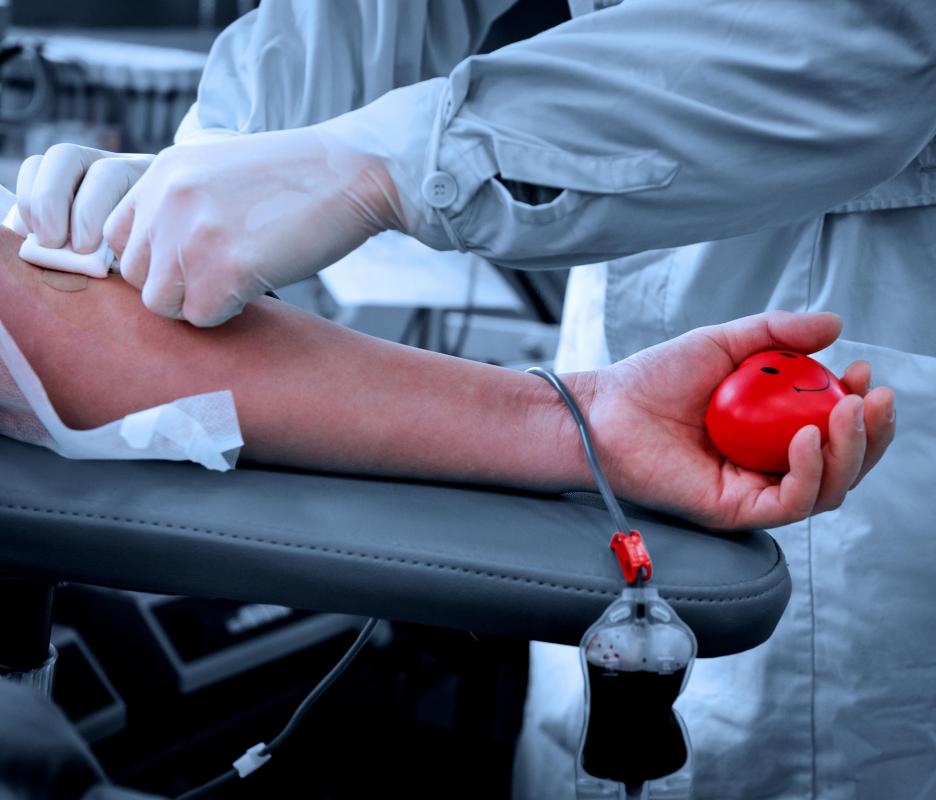At TheHealthBoard, we're committed to delivering accurate, trustworthy information. Our expert-authored content is rigorously fact-checked and sourced from credible authorities. Discover how we uphold the highest standards in providing you with reliable knowledge.
What is a Phlebotomist?
A phlebotomist is a medical technician trained specifically to take blood samples from patients and to perform basic laboratory tasks including setting up samples for analysis and entering lab results in a computer system. While many medical professionals practice phlebotomy in addition to other skills, especially in small offices, many major medical centers and blood donation organizations maintain a staff of phlebotomists to handle blood samples and collection. In most nations, a phlebotomist receives competitive pay and is a valued member of the medical team.
Training to become a phlebotomist varies, depending on the nation in which he or she is pursuing certification. In general, a phlebotomist attends a six-month to year-long program to learn the art, and follows up with periodic refresher courses of approximately six hours per year to keep skills current and learn about advances in phlebotomy. In addition, many phlebotomists retain membership in professional organizations.

The training a phlebotomist undergoes includes basic Cardiopulmonary Resuscitation, bedside skills, legal and ethical issues that surround the handling of blood, and blood drawing skills. The two techniques all phlebotomists are trained in are venipuncture and finger sticks. Finger sticks are used to collect small blood samples, and are very easy to perform. Venipuncture is the procedure most people visualize when they think of blood sampling, and it involves placing a needle into the vein to collect blood. Venipuncture requires more skill to perform correctly and painlessly. In some cases, a phlebotomist will also receive training in how to take arterial blood, an additional skill which is useful in some situations.

Bedside skills are very important for a phlebotomist, because he or she is often the only member of a lab that patients interact with. Phlebotomists who work for blood banks, for example, serve as the public face of their organization, and want to encourage donors to come again by offering friendly service, gentle care, and pain-free donation experiences. A phlebotomist for a commercial lab also tries to keep patients calm and happy, so that they will continue to bring their business to that lab.

While at work, a phlebotomist takes blood samples, keeps the lab organized, and enters lab results into a computer. A well-trained phlebotomist can take a blood sample from any kind of patient with minimal pain, using techniques learned in school and combining them with on the job experience. As medical support staff, a phlebotomist is a crucial member of a medical team, and in most nations they receive a salary that reflects this. In the United States, for example, a phlebotomist can expect to make an average of $18,700 US annually.
AS FEATURED ON:
AS FEATURED ON:

















Discussion Comments
How do i get started in this field?
Post your comments